Why the Des Moines Art Center decision to remove Greenwood Park artwork has caused an uproar
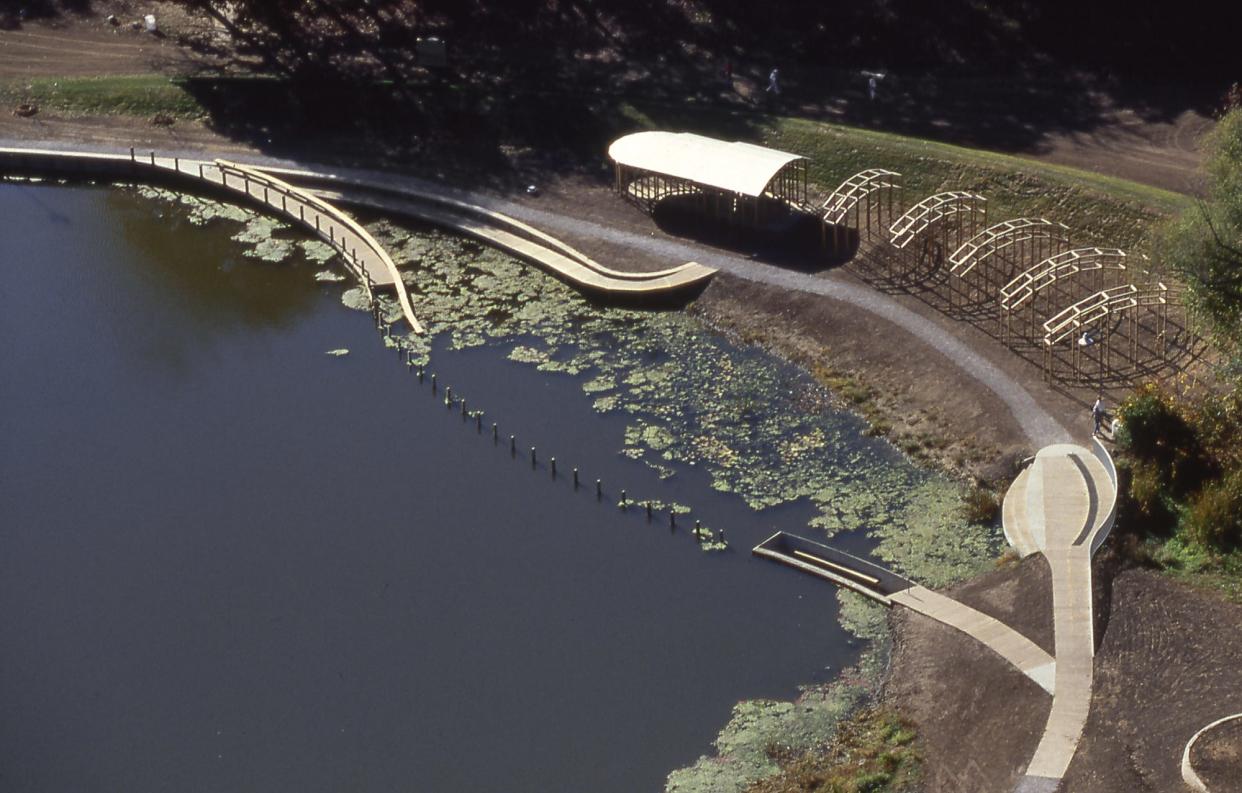
Patricia Prijatel has frequented Greenwood Park in Des Moines for the past four years.
It’s tranquil at the park, tucked past the Des Moines Art Center off 45th Street. Visitors are greeted with a multitude of trees, barren during the winter, trails and sloped hills that lead to little discoveries. There's an amphitheater, for example, or a great view of a pond, a sight Prijatel particularly enjoys.
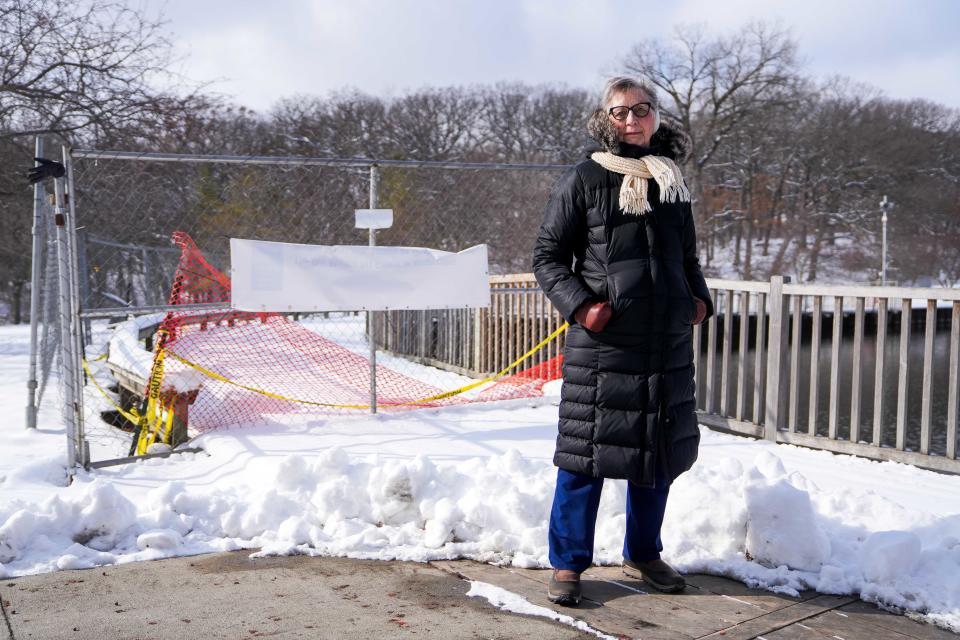
But that view changed last October, when fencing enclosed certain areas of the park to restrict visitors’ access.
And the view will change again later this year.
For 28 years, Greenwood Park has been home to an outdoor art installation that is owned and managed by the Des Moines Art Center. The park’s visitors have used the installation for years — knowingly or not.
The art installation, titled “Greenwood Pond: Double Site” and created from 1989 to 1996, includes elements such as walkways that visitors have used to walk around the edge of the pond at the park. There’s a pavilion, some of which had roofing that sheltered visitors from the elements or provided shade, depending on the season. There’s also a trough that visitors could descend into and be treated to a unique view of the water closer to eye level.
“Greenwood Pond: Double Site” was an important work for New York-based artist Mary Miss and involved several Iowa organizations and years of effort during its inception. What resulted was a $1.5 million investment from the Art Center and art that melded into nature and could engage people with the environment and the Art Center.
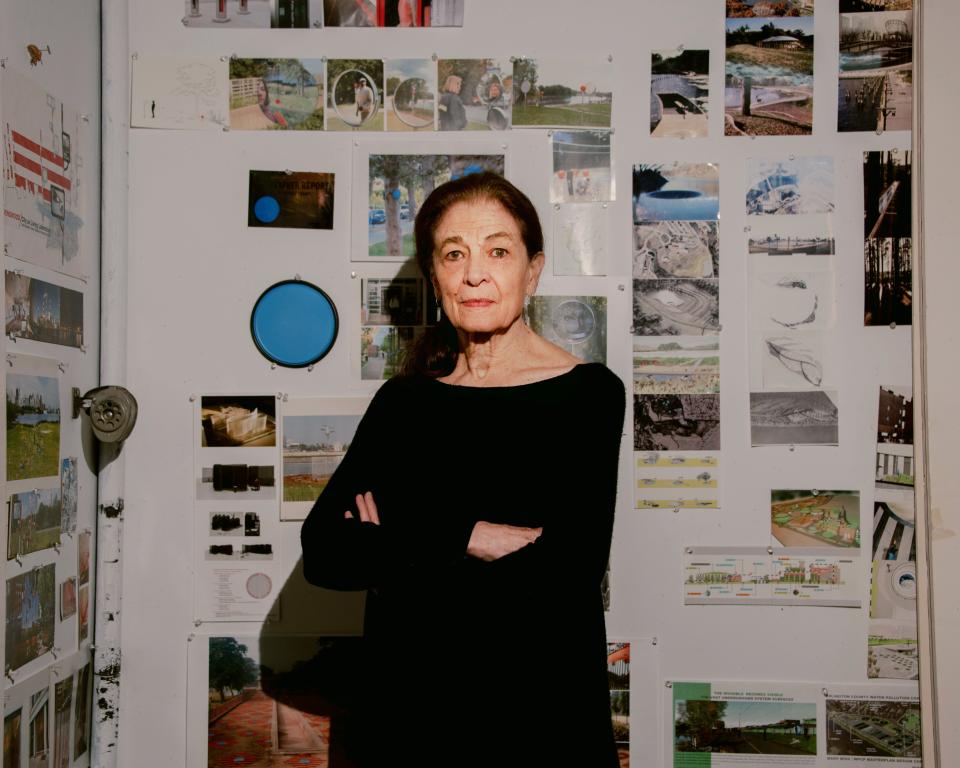
Nearly three decades later, the art installation will be removed from the park in 2024 due to what Art Center leaders say is the threat it poses to public safety and the high price involved in rebuilding and caring for it, a long-term cost that would surpass the Art Center’s $7.7 million annual budget last year.
But its removal has raised questions for Miss and captured national attention.
An engineering report from last year found that the installation’s “original choice of materials,” placement in “an unstable aquatic environment” and exposure to Iowa’s severe climate contributed to its ongoing structural integrity problems and public safety issues, according to a letter from the Des Moines Art Center to Miss. The Art Center provided a copy to the Des Moines Register.
“I never thought that it was a question of removing the work,” Miss told the Register in January regarding her communications with Des Moines Art Center director Kelly Baum about the state of “Greenwood Pond: Double Site.”
She had hoped for a “better path forward” in dealing with the installation's future — one that wouldn't involve removing it.
But efforts to dismantle what remains of “Greenwood Pond: Double Site” will begin in spring, director of external affairs Amy Day said in an email to the Register.
And what’s to come of the park will be an answer years in the making, though Prijatel has one idea: Preserve whatever can be preserved of the art installation.
“It’s just impressive that Des Moines did this,” Prijatel said of the creation of “Greenwood Pond: Double Site.” “And I would like Des Moines to build on that past with whatever they need to do in the future to keep it safe. But keep that organic sense. Keep it integrated with nature.”
Maintenance is no longer an option, the Des Moines Art Center says. Here’s why.
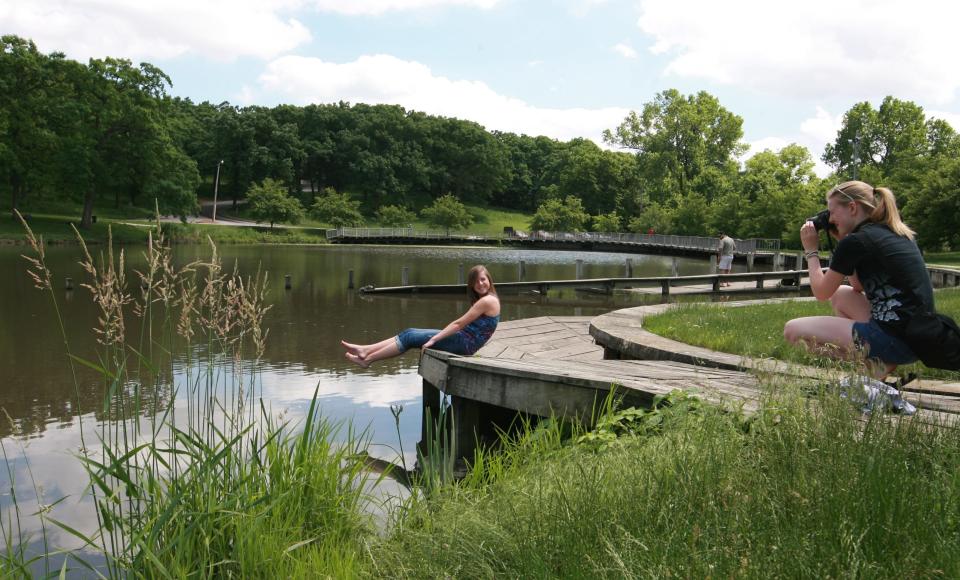
In December, Baum notified Miss of the decision to decommission her art installation at Greenwood Park.
She and Baum had been in communication about “Greenwood Pond: Double Site” previously, prompted by a structural review of the installation that called for immediate action from the Art Center in October due to public safety concerns. That led to closing off public access to certain portions of the installation and the removal of several elements of it.
All of this took place several months after Baum began her position as director in May, replacing former director Jeff Fleming, who held his position for more than two decades.
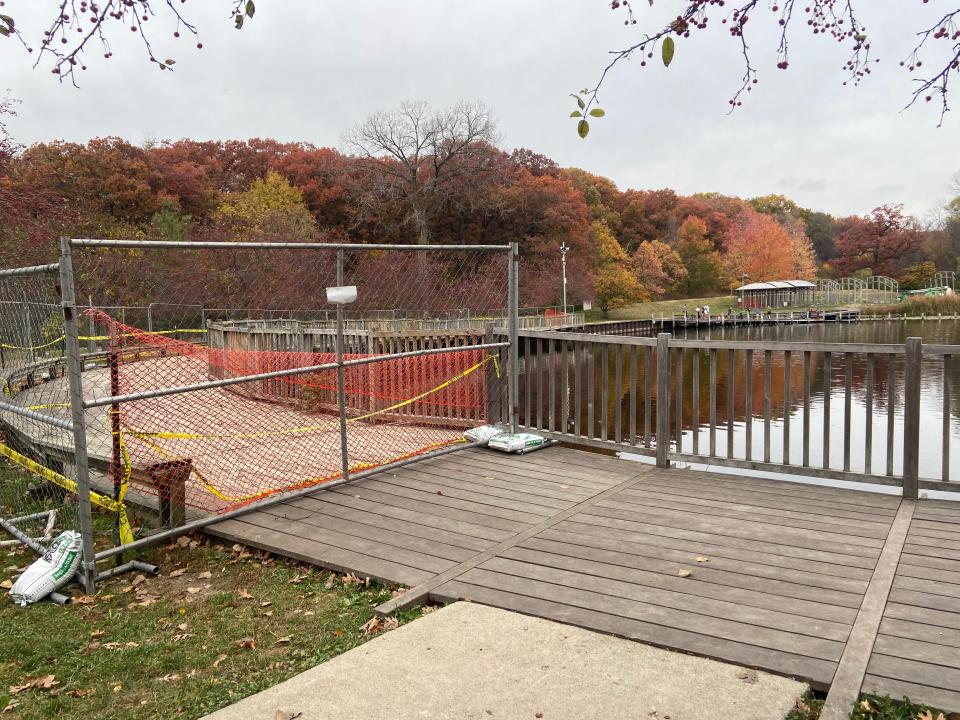
But what has come from this structural review, and the communication with the Art Center that ensued, left Miss with questions. What is reasonable maintenance of the art? Has that occurred over its lifetime?
Baum said the installation has received “consistent investment of human and financial resources” since it opened.
The Art Center points to several examples of maintenance, including $17,000 in repairs for a footbridge in 2022.
Per the Art Center’s records, repairs were made to "numerous sections of the work’s cantilevered bridge and various walkways, whose timbers have been eroded and destabilized by the impact of extreme weather, including ice and flooding,” Day said in an email to the Register.
And in 2015, the Art Center raised $467,000 to replace and repair the boardwalk, wooden art structures and the submerged observation platform, the Register reported in 2016. Miss is especially surprised that after those repairs, “Greenwood Pond: Double Site” would need to be removed now.
Before that, Day said Miss was “engaged” with an inventory and rehabilitation plan that resulted in repairs to “Greenwood Pond: Double Site” in 2014-2015.
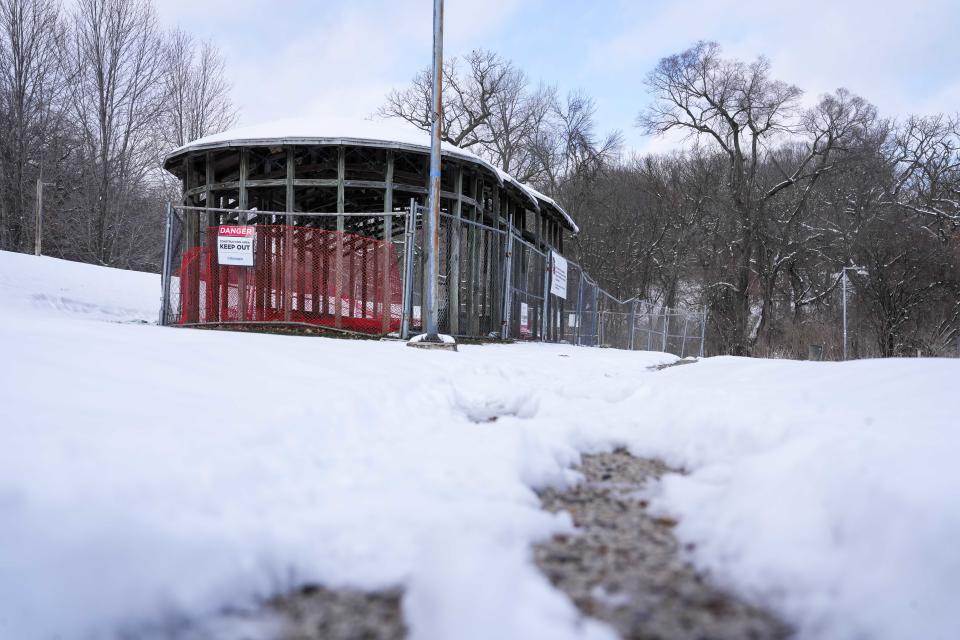
In addition to Art Center staff taking action as needed for maintenance of the installation, the Art Center has also commissioned assessments from conservators, structural engineers and landscape architects over the artwork’s history, Baum said.
According to an open letter from Baum published to the Art Center’s website on Feb. 3, the museum commissioned seven reports over nearly 30 years.
“Each one of those larger assessments, which itself requires us to direct resources towards it, each one of those assessments has pointed to the same series of contributing factors, which is that a work of art was placed in an unstable aquatic environment made with ephemeral materials with a lifespan of 10 to 12 years,” Baum said. “Engineering design not really meant to withstand the local weather, the extreme climates and this has contributed to its rapid decline.”
The boardwalk, pavilion and the arched structures in “Greenwood Pond: Double Site” developed dry rot in the “original wood timbers” and are “severely compromised,” according to the letter to Miss from the Art Center.
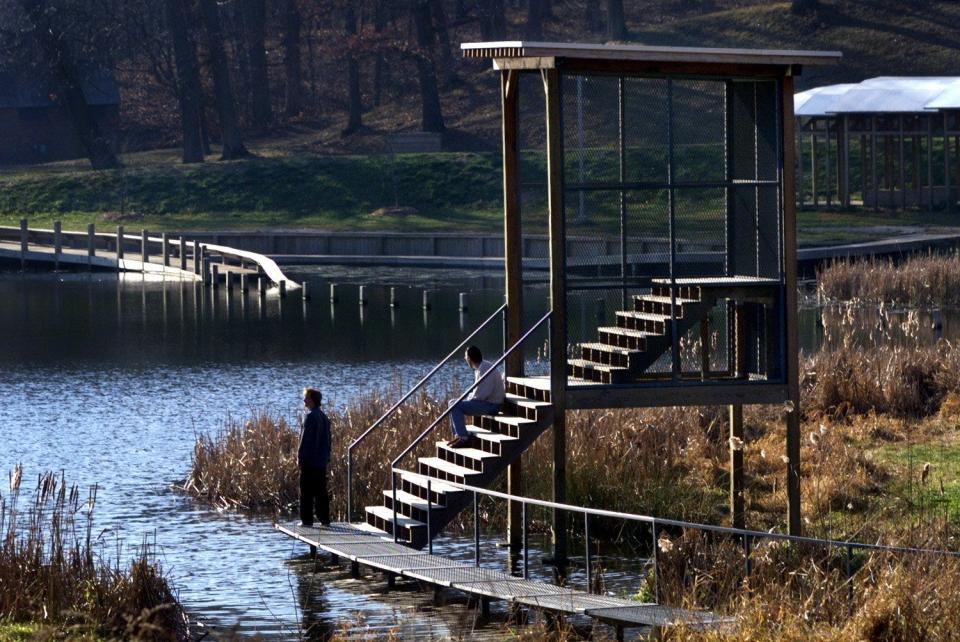
Treated lumber, concrete and wire mesh make up the artwork, Miss said.
The wood that makes up the majority of “Greenwood Pond: Double Site” has a lifespan of 10 to 12 years, according to the Art Center's letter.
Miss told the Register in January that she wondered if “replacing everything" is necessary, or if different portions of the installation could be replaced over time. She also wants to look at fundraising possibilities available.
But Baum said maintenance is no longer an option for “Greenwood Pond: Double Site.”
The cost to rebuild the art installation was estimated at $2.7 million in November. Baum estimated that overall, the cost of redesigning the artwork and the need to hire new staff — including a dedicated fundraiser, registrar, curator and facilities associate to care for it in perpetuity — would require a large endowment to fund its care and maintenance every year. Baum puts that at about an $8 million investment.
The Des Moines Art Center’s annual budget was $7.7 million last year, Baum said.
“Fundraising itself is an investment of resources and time,” she said. “And the mission of the Art Center is that we serve hundreds of thousands of people in the greater Des Moines area. We have thousands of works of art to care for, three buildings, the Sculpture Park, and it is not feasible to direct so much of our energy and so many of our modest resources toward the rebuild of a single work of art that we have and are proud to have cared for 30 years.”
Removal of ‘Greenwood Pond: Double Site’ catches wider attention
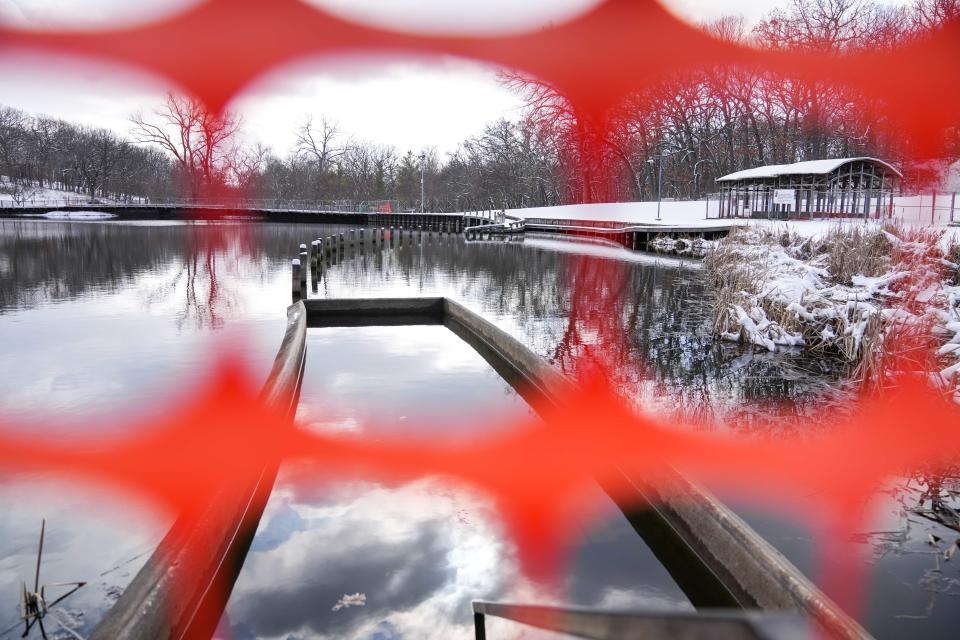
The origins of “Greenwood Pond: Double Site” began in 1989.
Miss was invited by then Art Center director Julia Brown Turrell to choose a site for a project and came across the pond at Greenwood Park — which Miss recalled as not being in “good shape” then, but seemingly open to many possibilities.
The location became a place to “build a demonstration wetland,” inspired by visits to bogs and sloughs across Iowa and by what she learned about the removal of many of them and how that had affected the land.
“Greenwood Pond: Double Site,” in the high-visibility location of a Des Moines park, could “engage people with some of the difficult environmental issues we face,” Miss said.
The project combined the efforts of the Art Center, the Des Moines Founders Garden Club, the Iowa Natural Heritage Foundation, the Polk County Conservation Board, the Science Center of Iowa and the city, according to Register archives.
“I think that Julia and I shared this idea that a museum, a cultural institution, could have a leadership role in addressing issues like this that didn't have to just be the realm of policymakers and scientists and educators, that cultural institutions could have a role,” Miss said.
“My whole career has been kind of devoted to this idea that engaging people in the public realm is the most important thing that I can do as an artist,” she said.
A month after Miss learned of what she called the “shocking news” about her installation being decommissioned by the Art Center, a nonprofit, The Cultural Landscape Foundation, publicized those plans.
This wasn’t the first time the nonprofit had called attention to this particular work.
In 2014, the Cultural Landscape Foundation published a report that details landscapes that are at risk. It included “Greenwood Pond: Double Site,” though repairs made by the Art Center afterward led to the nonprofit considering the installation “saved,” Charles A. Birnbaum, founder and president of the Cultural Landscape Foundation, said in January.
Since the latest news of the pending decommissioning of the art, 38 people, including artists, architects and educators, wrote letters of support for Miss and “Greenwood Pond: Double Site,” as of Feb. 19. That includes two individuals familiar with the Des Moines Art Center: M. Jessica Rowe, former deputy director of the Art Center and later director of the Greater Des Moines Public Art Foundation, and Deborah Leveton, former Art Center curator.
The Art Center’s policy on decommissioning is similar to its policy for deaccessioning, or removal of a piece from its collection, Baum said. The latter is governed by the principles of the Association of Art Museum Directors' professional practices and is relied on to guide decisions on deinstallation and decommission.
“Those protocols relate to physical conditions,” Baum said. “So, works of art that are damaged beyond reasonable repair. They also provide for works of art that cannot be cared for adequately and continue to need special treatment. And we also include there health and human safety — works of art that have become hazard to the public.”
What’s next for Greenwood Park?
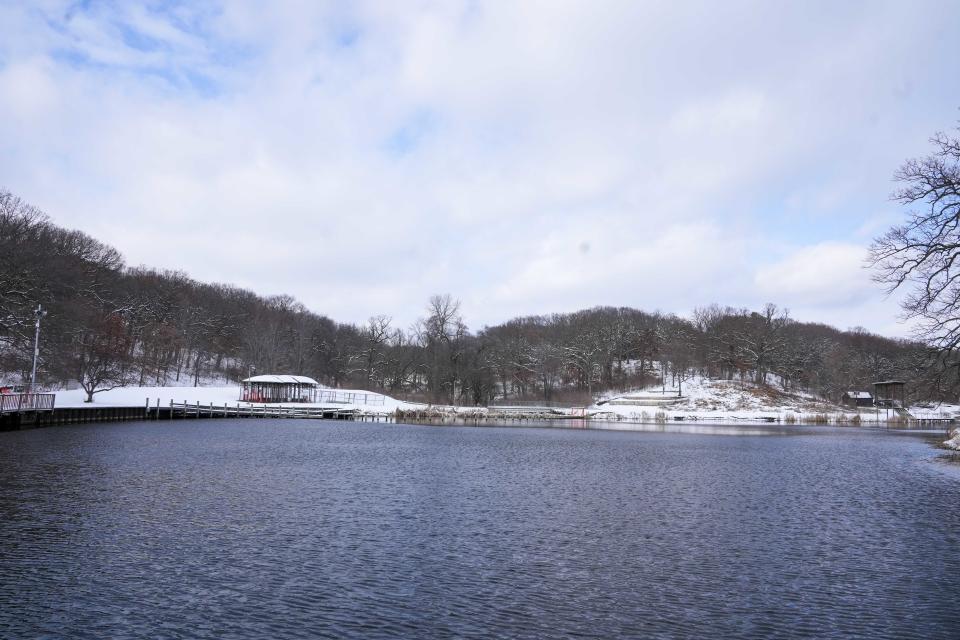
In some ways, the Des Moines park will see no change.
Birds will still chirp as they flutter from tree to tree. Community members will still visit for a walk or to admire nature.
And it'll remain a park just a few miles from downtown Des Moines.
Ben Page, Des Moines Parks and Recreation director, told the Register in February that Greenwood Park will be restored to what it was prior to the existence of Miss’ art installation — assuming the Art Center proceeds with deinstallation.
From there, city park planners will determine what the future of the park could be.
Page imagines that people will want to interact with the pond. He shared other thoughts: Incorporate a trail system around the pond, some seating in the park and maybe some historic signature that would inform visitors of what was previously at the park and give a “nod” to Miss’ work.
The public will be included in this process, and then his department will propose budgets.
Page emphasized that this will take years.
Like Prijatel, another of Greenwood Park’s visitors has a suggestion.
Samantha Thorpe, who came to Iowa in 1992 and has remained since, lives in the Waterbury neighborhood. She walks to the park nearly every weekend with her dog and has been taking her two children there for about 16 years.
Miss' installation, which she described as "innovative," was one of the reasons she’d go to the park, after all — to see the work.
That and to pursue her photography at a great site for beautiful photos.
“You still need to have some type of interactive option, probably made from a material that’s more durable,” Thorpe said of the future of Greenwood Park.
Visitors to the park should still have a way to walk around the pond in the way Miss’ pathway has provided, Thorpe said.
She'd also like to see an element for children to interact with.
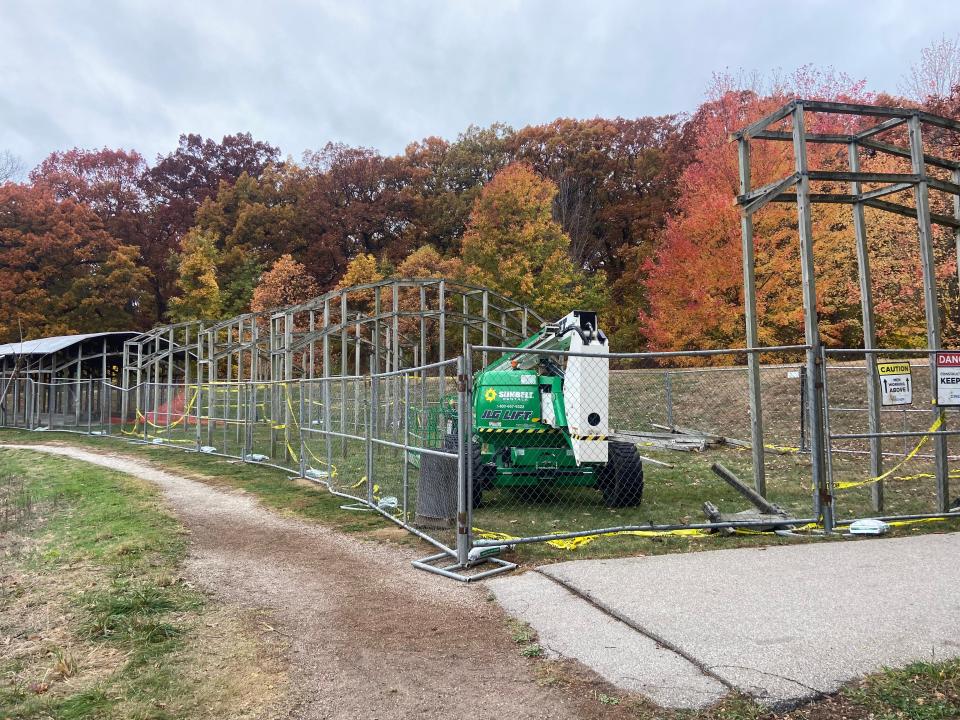
Whether “Greenwood Pond: Double Site” will continue to remain owned by the Art Center following its removal from the park will be decided with the board and in consultation with Miss, Baum said.
Miss said in January she has not considered what she’ll do next if the Art Center moves forward with removing the artwork.
Baum said installation of the artwork and its long presence in the park should be looked on with pride.
“The Art Center showed such extraordinary ambition and forethought when they commissioned this work from Mary and to have been willing to take the risks that they did, when they did, and to have been willing to invest $1.5 million — and this is the 1990s — to have been willing to invest $1.5 million in a brilliant idea by Mary Miss, The Art Center should be proud. The garden club should be proud. The city should be proud. All of our landscape architects, partners, Science Center. We should be really proud of what we did for ourselves and for Mary.”
Baum described land and environmental art as needing the outdoors but simultaneously being endangered by it.
Though a lot of people wanted “Greenwood Pond: Double Site” to be permanent, it was made with “ephemeral materials,” Baum said.
“I know that there's something to be learned from this experience," she said. "There's a discussion that we can have around the relationship between climate, publicly sited art, the relationship that we can have around equitable, or not, distribution of resources towards women artists.”
Paris Barraza covers entertainment, lifestyle and arts at the Des Moines Register. Reach her at PBarraza@registermedia.com or follow her on Twitter @ParisBarraza.
This article originally appeared on Des Moines Register: Why the Des Moines Art Center is removing Mary Miss' artwork at park

